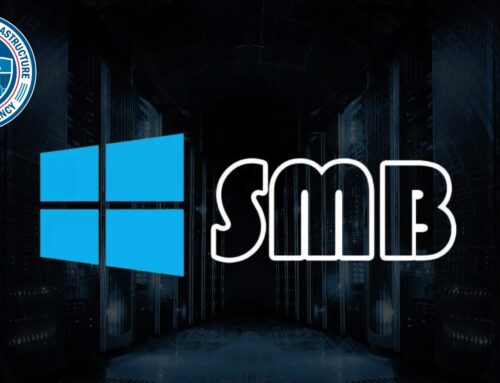
Secret Blizzard Deploys Malware in ISP-Level AitM Attacks on Moscow Embassies
The geopolitical landscape of cyber espionage continues to evolve, with nation-state actors pushing the boundaries of attack sophistication. Recent reports detail a chilling new campaign orchestrated by Secret Blizzard, a Russian nation-state threat actor, targeting foreign embassies in Moscow. This campaign leverages an audacious Adversary-in-the-Middle (AitM) attack at the Internet Service Provider (ISP) level, deploying a potent custom malware dubbed ApolloShadow. Understanding the mechanics and implications of such a high-stakes operation is paramount for any organization involved in international affairs or critical infrastructure.
Anatomy of an ISP-Level AitM Attack
An Adversary-in-the-Middle (AitM) attack fundamentally involves an attacker covertly intercepting and manipulating communication between two parties. What makes Secret Blizzard’s operation particularly alarming is its execution at the Internet Service Provider (ISP) level. This grants the attacker an unparalleled vantage point, allowing them to:
- Intercept Unencrypted Traffic: Before it even reaches the embassy’s network perimeter, all unencrypted communications traversing the compromised ISP become vulnerable to interception.
- Manipulate Encrypted Traffic: By employing sophisticated techniques like SSL stripping or, as hinted with ApolloShadow, trust certificate manipulation, encrypted connections can be compromised and decrypted.
- Inject Malicious Content: The attacker can inject malicious code, redirects, or, in this case, custom malware directly into legitimate data streams.
- Bypass Traditional Perimeter Defenses: Since the attack occurs upstream of the target’s network, most conventional firewalls, intrusion detection systems, and endpoint security solutions have limited visibility or capability to detect or prevent the initial compromise.
The ability to operate at the ISP level indicates significant resources, technical prowess, and potentially, state-sponsored collusion or coercion with an ISP.
ApolloShadow: The Malicious Payload
At the heart of this campaign lies ApolloShadow, a custom malware designed for persistent espionage. While the full extent of its capabilities is yet to be disclosed, preliminary information suggests a critical function: the ability to install a trusted root certificate.
- Root Certificate Installation: The installation of a trusted root certificate is a significant operational capability for malware. It allows the attacker to effectively masquerade as legitimate entities within encrypted communication channels. Any traffic encrypted with a certificate issued by this malicious root certificate will be trusted by the compromised system, making it trivial for Secret Blizzard to perform man-in-the-middle attacks, decrypt sensitive communications, and maintain persistent access without raising red flags related to untrusted certificate warnings.
- Stealth and Persistence: By embedding itself at such a fundamental level of trust, ApolloShadow can operate with a high degree of stealth, making detection and removal significantly challenging. This capability is paramount for long-term espionage campaigns.
Secret Blizzard: A Resurgent Threat Actor
The identification of Secret Blizzard as the perpetrator underscores the persistent and evolving threat posed by nation-state actors. Their decision to employ ISP-level AitM attacks demonstrates an escalation in their operational tradecraft and a willingness to leverage highly privileged access points for intelligence gathering. This campaign is not merely about data exfiltration; it represents a strategic move to undermine the secure communications of diplomatic entities and gain deep insights into their operations.
Remediation Actions and Mitigations
Defending against ISP-level AitM attacks, particularly those deploying sophisticated malware like ApolloShadow, requires a multi-layered and proactive strategy:
- Enhanced Network Monitoring: Implement advanced network traffic analysis (NTA) tools capable of detecting anomalous traffic patterns, certificate mismatches, and unusual network behaviors that might indicate an AitM attack.
- Strict Certificate Trust Policies: Regularly audit and enforce strict policies on trusted root certificates within organizational systems. Utilize Certificate Transparency logs where possible to identify newly issued certificates that might be suspicious.
- Endpoint Detection and Response (EDR): Deploy robust EDR solutions on all endpoints to monitor for suspicious process activity, file modifications, and the installation of unauthorized root certificates.
- Secure Communications Protocols: Mandate the use of strong encryption protocols (e.g., TLS 1.3 with Perfect Forward Secrecy) for all external and internal communications. Ensure all services are configured to reject weaker ciphers.
- VPN and Secure Tunnels: For highly sensitive communications, establish dedicated, end-to-end encrypted VPN tunnels or secure private networks that do not rely on potentially compromised public ISPs.
- DNS Security: Implement DNS-over-HTTPS (DoH) or DNS-over-TLS (DoT) and use reputable, secure DNS resolvers to prevent DNS hijacking or manipulation at the ISP level.
- Regular Vulnerability Management: Continuously patch and update all systems, software, and network devices to close known security gaps that attackers might exploit to gain initial access or escalate privileges.
- Employee Awareness Training: Educate users about the dangers of untrusted SSL/TLS certificate warnings and the importance of verifying secure connections, especially in sensitive environments.
Relevant Tools for Detection and Mitigation
| Tool Name | Purpose | Link |
|---|---|---|
| Wireshark | Network sniffing and protocol analysis to detect anomalies or unencrypted traffic. | https://www.wireshark.org/ |
| TShark | Command-line equivalent of Wireshark for automated network analysis and scripting. | https://www.wireshark.org/docs/man-pages/tshark.html |
| Nmap | Network discovery and security auditing, including SSL/TLS cipher suite scanning. | https://nmap.org/ |
| OpenSSL | Command-line tool for SSL/TLS certificate analysis, verification, and generation. | https://www.openssl.org/ |
| Sysmon (Windows) | Monitors and logs system activity, including certificate installations and process creation. | https://learn.microsoft.com/en-us/sysinternals/downloads/sysmon |
| Zeek (formerly Bro) | Network Security Monitor (NSM) for detailed traffic analysis and detection of suspicious activity. | https://zeek.org/ |
Key Takeaways for Cybersecurity Professionals
The Secret Blizzard campaign targeting Moscow embassies is a stark reminder of the escalating sophistication in cyber warfare. This incident highlights several critical points for cybersecurity professionals:
- The vulnerability of even seemingly secure communications when an attacker has upstream control at the ISP level.
- The increasing threat of custom malware leveraging fundamental trust mechanisms like root certificates for stealth and persistence.
- The imperative to implement layered security, beyond perimeter defenses, focusing on endpoint integrity and advanced network traffic analysis.
- The ongoing need for international collaboration and intelligence sharing to combat well-resourced nation-state threat actors.
Staying ahead of such advanced persistent threats requires continuous vigilance, investment in cutting-edge security solutions, and a deep understanding of the evolving threat landscape





